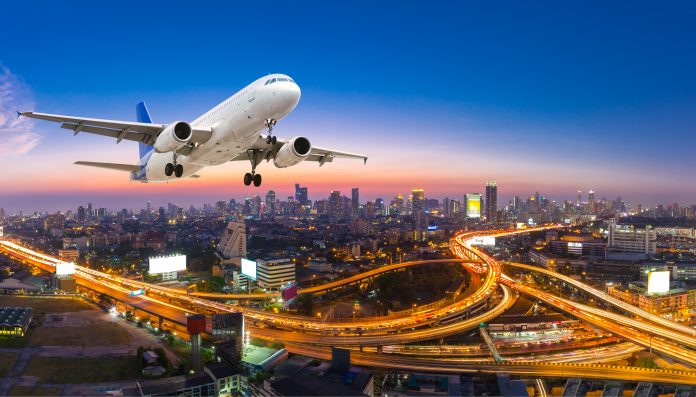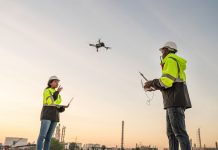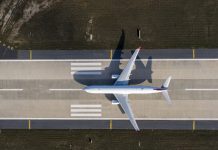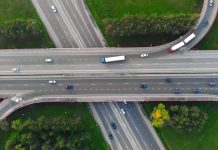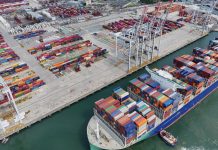The future of transport in Europe is explored here with comment from Henrik Hololei of the European Commission, plus the priorities for transport research, digital innovation and aviation safety
In the October 2019 edition of Open Access Government, we published an article by Director-General of DG Move of the European Commission, Henrik Hololei, who outlined the challenges and opportunities for the European transport sector, including climate change, as well as research and innovation.(1)
Henrik Hololei is of Estonian nationality and has served as Director-General for Mobility and Transport since 2015. Before that, he was Deputy Secretary-General of the European Commission from 2013 to 2015. From 2010 to 2013, he served as Head of Cabinet of the then Vice-President for Transport, Siim Kallas.(2) His CV is well worth a read if you want to go farther back and see what other jobs he has done. Perhaps it is worth mentioning here that his education took place between 1988-1993 at Tallinn Technical University, Estonia at the Department of Economics and in 1992, at University in Denmark where he studied Political Science and International Economy.(3)
The future of transport in Europe
One point Hololei stressed in his article for Open Access Government during 2019 was that activity around transport activity has never been so high and it continues to increase. Amongst the many insights he offers, we gain a glimpse into the future and are told that passenger transport is predicted to grow 42% by 2050 and freight transport by 60%. This was a point he developed in the article.
“A capacity crunch is already evident for certain transport modes and unless we act, the squeeze will get tighter. For instance, if capacity remains as it is, it is estimated that by 2040, annual demand for flights in Europe will outnumber the number of possible flights by 1.5 million. This would mean 160 million passengers being unable to fly.” (1)
Transport research
We know that it is sensible to have the European Commission’s research policy closely linked with its transport policy. “Whether we are seeking to make transport more sustainable, more efficient, safer or more automated – progress towards all of these objectives is possible through European Union (EU)-funded research,” Hololei underlined.(1)
We now know that research and innovation will be vital areas in ensuring that adequate solutions are available when it comes to the use of sustainable alternative fuels and this is certainly the view of the new Commissioner for Transport, Adina Vălean. “This will have to be matched by sufficient production capacity and sufficient availability of charging and refuelling infrastructure in Europe,” she explained. Commissioner Vălean also called for “a common strategic research and innovation agenda to accelerate the developments of connected and automated mobility” and stressed that its full potential must be tapped into.(4)
This aligns well with the view of Hololei who believes that the Member States and industry equally have major roles to play when it comes to transport research. “Investing in research and innovation is the best guarantee that solutions will always be found to our greatest challenges,” he concluded.(1)
Digital innovation: Connected and automated mobility
At the end of his article for Open Access Government, Hololei said that with the start of a new Commission from December 2019, this gives the chance to review “political priorities and to adjust them to an ever-changing world.” We know that one of the priorities for the new Commissioner for Transport, Adina Vălean will be to make the most of the opportunities concerning connected and automated mobility, with a heavy emphasis on digital innovation. Ursula von der Leyen President of the European Commission urges Commissioner Vălean to “ensure the continued modernisation of key transport systems” in Europe.(5)
Commissioner Vălean thinks that connected and automated mobility solutions must be harnessed and supported to increase capacity, safety and sustainability of transport in the EU. She gives an interesting example of this that concerns the European rail signalling system.
“For example, the European rail signalling system ERTMS can increase capacity by 50%, safety by 25% and reduce costs by 25%. I will also support the rollout of Intelligent Transport Systems (ITS). They provide innovative services in road transport and traffic management. They enable users to be better informed and to make safer, more coordinated, and smarter use of transport networks.”
Aviation safety
Picking up on this theme of safety, we know that on 9th December 2019, the Commission updated the EU Air Safety List. This is a list of airlines that do not meet international safety standards, and as such, are subject to an operating ban or operational restrictions within the EU. The Armenian Civil Aviation Committee is now under heightened scrutiny because there is evidence here of a decrease in safety oversight.
Commissioner for Transport Adina Vălean said this decision illustrates the continuous efforts of the Commission to offer the highest level of safety. “Not only to European travellers but to travellers worldwide, because aviation safety knows no border or nationalities. I am pleased to announce that the European Commission was able today to clear all Gabonese air carriers from the EU Air Safety List. Gabon was on the List already since 2008, so it is very good that we can recognise the efforts the aviation safety authorities in Gabon have made.”(6)
The future of transport in the EU
The Commissioner for Transport will need to focus on “mitigating the impact of transport on our climate and natural environment, from emissions reductions to air, water and noise pollution” in the view of the President of the European Commission.(5) Looking ahead, achieving EU climate-neutrality by 2050 means that transport must modernise, in the view of Commissioner Vălean. Modernising means tackling capacity constraints and ageing infrastructure plus making transport more efficient and as such, it is essential to invest in “transport networks and exploiting digital innovation.”(4)
To achieve this aim, sufficient funding for transport must be secured from the next EU budget, Commissioner Vălean urges. “We must also build on the opportunities of new technological and social developments, such as digitalisation of transport services, intelligent transport services, ride-sharing and mobility-as-a-service,” she added.
References
- https://www.openaccessgovernment.org/european-transport-sector/76178/
- https://ec.europa.eu/info/persons/director-general-henrik-hololei_en#biography
- https://ec.europa.eu/info/sites/info/files/cv-henrik-hololei_0.pdf
- https://ec.europa.eu/commission/commissioners/sites/comm-cwt2019/files/commissioner_ep_hearings/answers-ep-questionnaire-valean.pdf
- https://ec.europa.eu/commission/commissioners/sites/comm-cwt2019/files/commissioner_mission_letters/mission-letter-valean-2019-2024_en.pdf
- https://ec.europa.eu/commission/presscorner/detail/en/IP_19_6686

